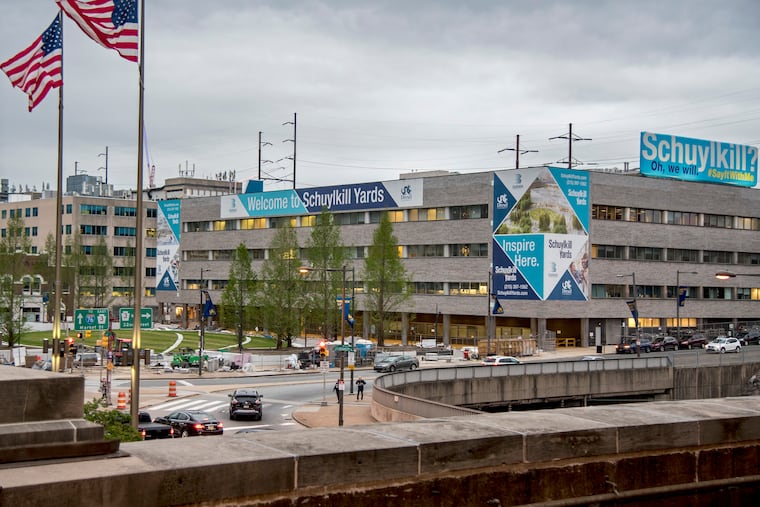Human remains discovered at Schuylkill Yards, but developer has a plan
Bones were uncovered during archaeological testing at the site.

An archaeological team deployed to test for the presence of human remains on the site of the massive Schuylkill Yards development poised to rise around 30th Street Station has discovered human bones beneath a parking lot a block west of the station.
The bones — a femur and a tibia — were uncovered about two weeks ago during test excavations performed by Richard Grubb & Associates, a cultural resource management firm based in Cranbury, N.J.
In a letter reporting the discovery to interested parties in the archaeological, preservation, and cultural communities, Gerard H. Sweeney, president and CEO of developer Brandywine Realty Trust, and Douglas Mooney, president of the Philadelphia Archaeological Forum, said that the remains were handled according to a protocol, or procedural plan, put in place by Brandywine to address such situations.
“Excavations of the test pit ceased immediately; the location of the remains were mapped using a handheld GPS device; each exposed human remain was separately hand-excavated, documented, and placed in a bag with a tag listing its location,” the letter reported.
The bones were found in previously disturbed fill, which was “likely created during prior construction of a nearby bridge abutment given the presence of modern artifacts.” No intact skeletal remains were discovered and no burial artifacts, such as coffins, were identified, the letter said.
Brandywine has filed its plan of action for removal of any remains with Philadelphia Orphans’ Court, which has jurisdiction over abandoned graveyards and cemeteries. If Orphans’ Court approves the plan, the remains will eventually be reinterred in Woodlands Cemetery in West Philadelphia. Until then, skeletal relics stay on the Schuylkill Yards site.
Two of the city’s oldest and largest burial grounds were once located around the 30th Street Station area. The Upper Burial Ground and the Lower Burial Ground (also known as the Blockley Burial Ground) were both begun by the Quakers in the 17th century. But the Quakers ceased use of the grounds after a few decades and the site became much-used paupers’ cemeteries, completely unregulated.
No records have been located that remains were ever removed from the area, which was acquired by the Pennsylvania Railroad in 1850. Nor is it possible to determine the number of burials.
Brandywine, which has embarked on the ambitious $3-billion-plus Schuylkill Yards development project in partnership with Drexel University, learned of the presence of the old graveyards earlier this year.
Following a meeting in May with archaeologists, preservationists, representatives from the state and city, and the Religious Society of Friends, Brandywine put together a plan that includes archaeological monitoring of the site and procedures for handling remains should any be discovered.
Mooney, the PAF president, said Friday that Brandywine’s "candor and transparency in sharing information about recent discoveries” should be lauded.
“We believe that this project represents an example of how archaeologists and developers can successfully work together to help protect the city’s many unmarked historic burial grounds and to respectfully recover and relocate the remains," he said.